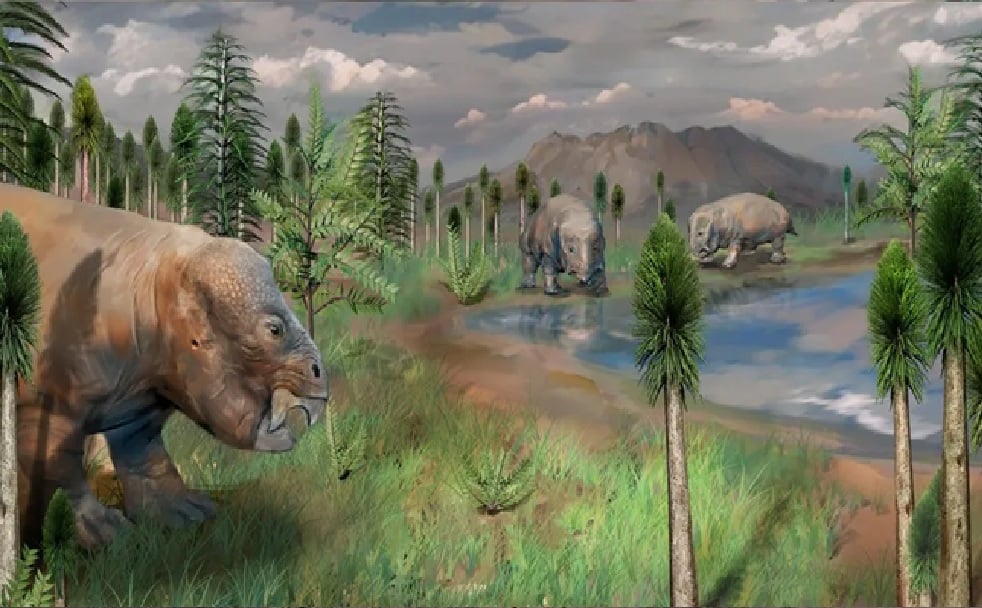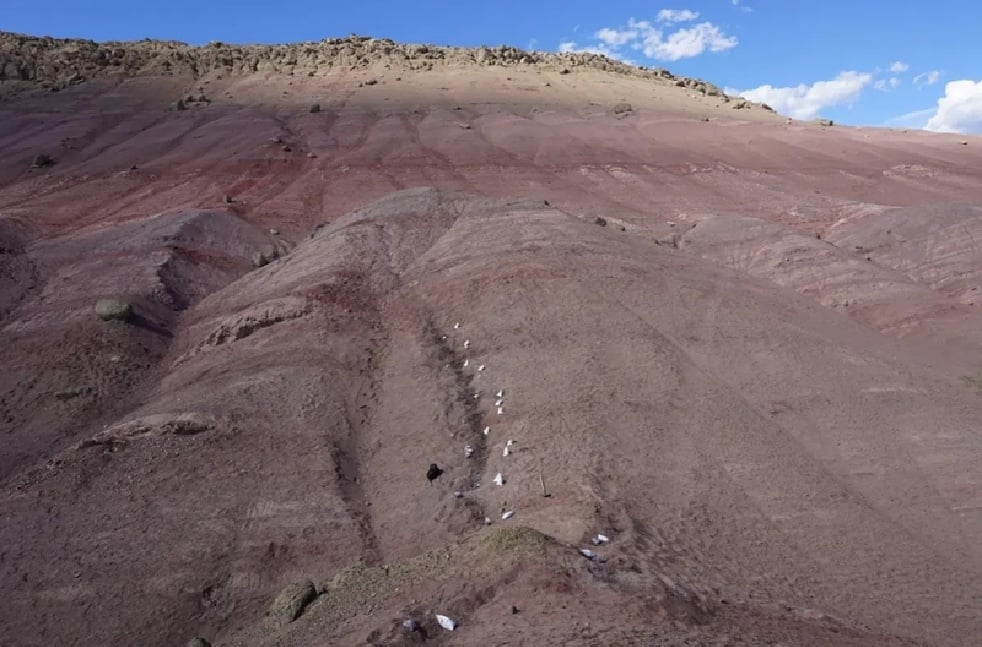(NLDO) - 250 million years ago, a near-apocalyptic event wiped out 80% of life on Earth. Only one place was unaffected.
According to Live Science , scientists have just discovered a series of shocking fossils in the Xinjiang region of China, showing that this place was once an "anti-apocalypse stronghold" when the Earth experienced the worst extinction event in history.

The land that is now Xinjiang, China, may have been an "anti-doomsday stronghold" during the great extinction event of the Pleistocene - Illustration: LIVE SCIENCE
About 250 million years ago, life on Earth underwent a terrible ordeal.
At that time, the supercontinent Pangaea was in the process of breaking up, but all of Earth's land was still largely clustered together, with the new continents separated by shallow seas.
A massive eruption from a volcanic system called the Siberian Traps appears to have pushed carbon dioxide levels to an all-time high, more than six times higher than they are today. Causing global warming and ocean acidification, leading to ecosystem collapse.
This near-apocalyptic event, known as the "Permian extinction," wiped out 80% of life on the planet.
Yet fossils hidden in sediments in an area of Xinjiang show that at that dire time, there was still a relatively healthy ecosystem.
Inside the "doomsday citadel", conifer forests continue to grow, supplemented by spore-producing ferns.

What is now a vast desert in Xinjiang was once lush during the most terrible period of life on Earth - Photo: NIGPAS
A team of authors led by Professor Wan Yang from Missouri University of Science and Technology (USA) sought the answer to the "inviolability" of this area.
According to a paper published in the journal Science Advances, rocks containing layers of ash bearing zircon crystals in the Xinjiang desert have helped researchers clearly identify sediment layers dating to the Diapsid extinction.
These layers are filled with highly adaptable plants, including species with large roots or underground stems, that can live for hundreds of years, and that have high seed production.
This survival may have been especially possible in humid, high-latitude regions. The fossil site in Xinjiang is now desert, but at the time was dotted with lakes and rivers, just a few hundred miles from the ancient coastline.
At the time of the Earth's great disaster, the climate here was only slightly drier, not as severe as the drought in most other places in the world .
The survival of plants may have meant that many animals also found suitable refuges, with enough food to keep them going through the harsh times.
The findings in Xinjiang suggest there may be other “doomsday strongholds” elsewhere in the world, the authors say. Unlike the oceans, climate change on land is uneven, and some temperate regions may escape.
Source: https://nld.com.vn/phat-hien-thanh-tri-chong-tan-the-250-trieu-nam-o-trung-quoc-19625031610170239.htm





































































































Comment (0)